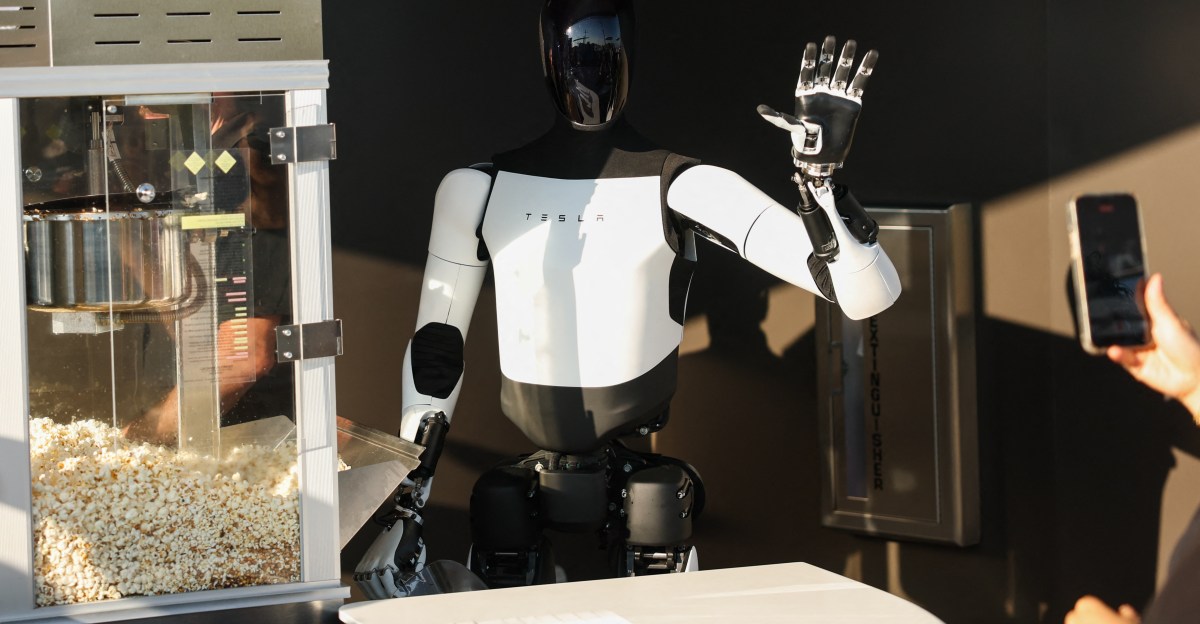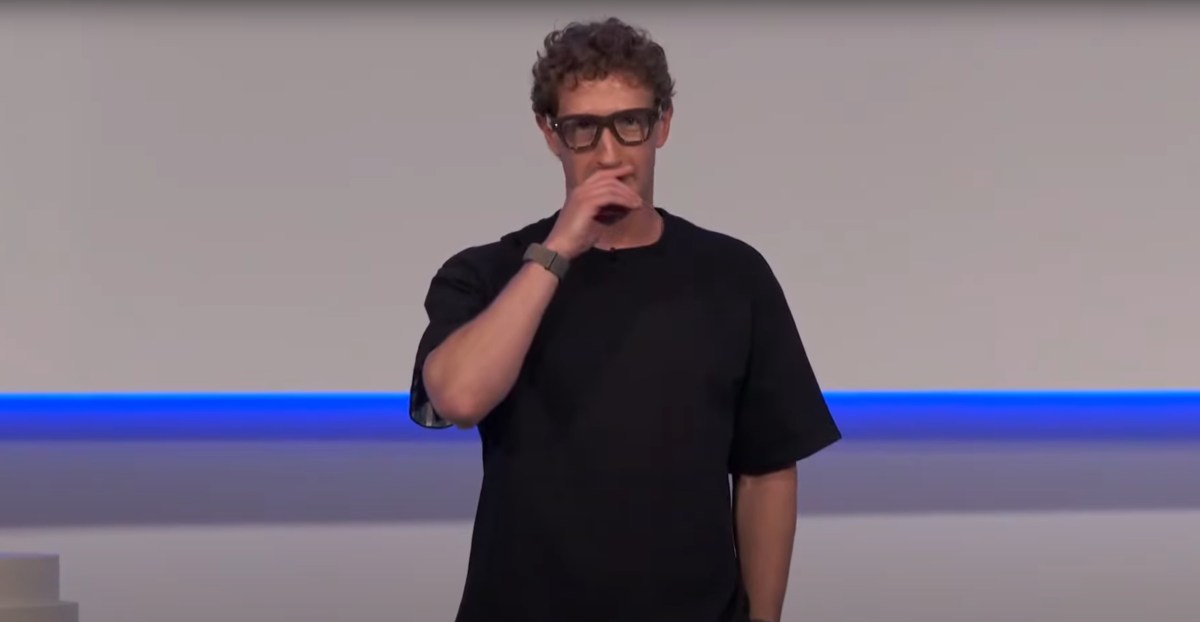
Tesla’s Master Plan 4 Promises ‘Sustainable Abundance’ but Critics See Vague AI Fantasies
Sources: https://www.theverge.com/tesla/769009/tesla-master-plan-4-ai-robotics-abundance, The Verge AI
TL;DR
- Tesla’s Master Plan 4 centers on artificial intelligence, humanoid robots, self-driving cars, and the buzzword “sustainable abundance,” but critics call it vague and lacking concrete deliverables. The Verge
- The plan is notable for being published on X (Elon Musk’s platform) rather than Tesla’s site and for its reference to an almost utopian future of AI—described by some as AI-generated in tone. [The Verge](
- The article contrasts Master Plan 4 with prior plans, arguing each earlier plan had more concrete goals (e.g., affordable EVs, robotaxis, fossil-fuel elimination), while Plan 4 reads as “fluff.” [The Verge](
- Outside factors cited include Musk’s other ventures and brand pressures that have coincided with a downturn in Tesla’s sales across major markets. [The Verge](
- The piece notes specific contradictions and exaggerations (e.g., “infinite” growth or towing capacity) that critics label as misaligned with product reality. [The Verge](
Context and background
Tesla’s Master Plan lineage has historically served as a narrative scaffold for the company’s product roadmap, outlining ambitious goals and the timeline to achieve them. The first plan (2006) focused on building an electric sports car and then using the resulting revenue to develop progressively more affordable EVs. The second plan (2016) expanded into electric semi-trucks and buses, self-driving capabilities, and the vision of robotaxis that customers could monetize. The third plan (2023) framed Tesla as a leader in eliminating fossil fuels and driving the global transition to sustainable energy. The Verge’s overview of Master Plan 4 notes that, unlike its predecessors, the fourth installment appears on X and reads like it could have been generated by an AI chatbot, emphasizing abstract concepts such as sustainable abundance and “infinite growth.” [The Verge]( The Verge’s assessment positions Plan 4 as a shift from product milestones to broader, less tangible rhetoric. It highlights that Musk has publicly engaged in related ventures (e.g., xAI) and corporate moves (e.g., the Cybertruck) that some view as distracting from core vehicle and energy projects. The article also points to a perceived disconnect between the plan’s lofty ambitions and recent business performance, including struggles in a competitive market and questions about the commercialization of robotics and autonomy. This context matters for developers, investors, and enterprises watching how practical or actionable Tesla’s future commitments will prove to be. [The Verge]( Perhaps most striking in the assessment is the recurrent pattern of celebration of “abundance” and “infinite growth,” terms that critics say blur the line between aspirational rhetoric and executable program. The plan’s phrasing, as described by The Verge, relies on expansive language and utopian tone rather than explicit milestones or measurable KPIs. The result is a document that reads more like a public-relations vision than a project charter with deadlines. [The Verge](
What’s new
Master Plan 4 is described as the shortest entry in Tesla’s ongoing series, clocking in at roughly 983 words. It marks the first time a Master Plan was posted on X rather than Tesla’s own site, and its prose has drawn comparisons to being authored by an AI assistant—specifically Grok, the platform’s chatbot. The core proposition remains ambitious but highly abstract: technology-enabled, affordable products that vie to democratize opportunity and raise quality of life through “sustainable abundance.” The piece leans on phrases like “infinite growth” and asserts that growth should be unconstrained by traditional limits such as labor or real estate, language that has drawn particular scrutiny from observers who favor a more proven, milestone-driven approach. [The Verge]( In contrast with prior Master Plans, Plan 4 eschews explicit product roadmaps in favor of a philosophical arc. The Verge notes that earlier plans included concrete product deliverables (the Model S as a starting point, then scaling to more affordable EVs; the robotaxi concept and autonomous driving as monetizable products; and a broad push to eliminate fossil fuels). By comparison, Plan 4’s emphasis on AI, humanoid robots, and “sustainable abundance” reads as more speculative than actionable. This has prompted discussions about whether the document represents a strategic pivot or a reset that preserves room for interpretation rather than precision. [The Verge](
Why it matters (impact for developers/enterprises)
From a strategic perspective, Master Plan 4’s vagueness creates a mixed signal landscape for developers, partners, and investors. If the emphasis remains on AI, robotics, and scalable, affordable technologies without clear KPIs or timelines, stakeholders may find it challenging to translate the vision into actionable work streams. The Verge’s critique suggests that the absence of concrete milestones could complicate project planning, software development cycles, and deployment roadmaps for autonomous systems, robotics, and related AI tooling. This matters for enterprises assessing Tesla’s long-term technology bets, supplier decision-making, and potential collaborations that rely on predictable product trajectories and performance benchmarks. [The Verge]( Moreover, the surrounding context cited by The Verge—Musk’s broader portfolio (e.g., xAI), public actions, and political engagements—feeds into a narrative about resource allocation and strategic priorities. The article argues that, while the plan might strive for a future in which technology reduces scarcity, the current business climate and brand challenges complicate the path to that future. For developers and enterprises focused on hardware, software, and platform ecosystems, the risk is that a high-concept master plan may not translate into the reliability they require for ongoing development, testing, and product integration. [The Verge](
Technical details or Implementation
The Master Plan 4 as described emphasizes three unifying themes: AI, humanoid robotics, and autonomous driving, all tethered to a broader idea of sustainable abundance. The document’s tone has drawn scrutiny for its lack of quantified commitments and deadlines, which makes it difficult to map to a concrete technical program. The Verge notes that the document’s language mirrors a utopian vision, with early signals suggesting an aim to “democratize society” by making technologically advanced products affordable and broadly accessible. However, there is little to no emphasis on the specific technical milestones, engineering specs, or deployment timelines that would typically accompany a roadmap for robotics platforms, integrated AI systems, or mass-market autonomous solutions. [The Verge]( The plan also references existing industry conversations around “infinite growth” and the idea that demand can be effectively unlimited, a rhetoric often used by Musk in various contexts. Critics highlight that such language does not align with typical product cycles, supply constraints, or regulatory realities faced by major hardware and software programs. The article also points out that some claims—such as using the phrase “infinite” to describe vehicle demand or capabilities (like Cybertruck towing) — can lead to misperceptions about what is technically feasible, illustrating a disconnect between aspirational statements and physical product limits (e.g., towing capacity of 11,000 lbs is not infinite). [The Verge]( For developers and enterprises evaluating AI and robotics ecosystems, the takeaway is a call to scrutinize strategic narratives for actionable content. Plan 4’s lack of deadlines or clear product deliverables means that any collaboration or investment should be grounded in more concrete commitments beyond broad philosophical commitments. In practice, this could influence how teams prioritize AI tooling, robotics prototypes, and autonomous software initiatives if they are evaluating alignment with Tesla’s long-term bets. [The Verge](
Master Plan 1–3: a quick recap (for context)
The Verge’s piece contrasts Plan 4 with earlier plans to illustrate what critics see as a shift from roadmap-driven ambition to high-level rhetoric. A concise summary helps frame expectations: | Master Plan | Core aim described |
| Notable emphasis |
|---|
| --- |
| --- |
| Master Plan 1 (2006) |
| Start with a halo product to fund broader affordability |
| Master Plan 2 (2016) |
| Concrete vehicle categories and autonomous driving as monetizable services |
| Master Plan 3 (2023) |
| Ambition to eradicate fossil fuels and expand sustainable energy at scale |
| Master Plan 4 (2024) |
| The inclusion of this table serves to show how public expectations have evolved—from product milestones and scalable business models to broader, less tangible ideals. The Verge argues Plan 4 could be a strategic pivot or a retreat from commitments that had previously anchored tangible deliverables. [The Verge]( |
Key takeaways
- Master Plan 4 spotlights AI, humanoid robotics, autonomous driving, and the idea of sustainable abundance, but critics argue the plan is too abstract to function as a concrete roadmap. [The Verge](
- The plan’s presentation on X and its tone—described as utopian and possibly AI-generated—are notable departures from prior plan releases, which were published on Tesla’s site with clearer product focus. [The Verge](
- The article emphasizes a contrast between aspirational language and actual progress in areas like robot assistance, autonomous driving, and solar products, which have faced challenges in market reception and execution. [The Verge](
- Critics highlight the disconnect between the rhetoric of “infinite growth” and practical constraints observed in product capabilities (e.g., about towing and real-world autonomy). This tension matters for developers and enterprises assessing risk, timelines, and collaboration potential with Tesla’s long-term technology roadmap. [The Verge](
- The broader media and public conversation frames Plan 4 within a broader narrative about Musk’s ventures and the company’s brand trajectory, underscoring the need for careful interpretation of who benefits from this strategy and when. [The Verge](
FAQ
-
What is Master Plan 4 about?
It emphasizes AI, humanoid robotics, self-driving cars, and “sustainable abundance” as overarching themes, according to The Verge’s summary. [The Verge](
-
How does Plan 4 differ from earlier plans?
Earlier plans outlined more concrete product and milestone commitments (e.g., affordable EVs, robotaxis, fossil-fuel elimination). Plan 4 is described as more abstract and rhetoric-driven by critics. [The Verge](
-
What are the potential risks highlighted by the critique?
The lack of explicit deadlines or KPIs could hinder developers’ and investors’ ability to translate the plan into actionable work streams, and the reliance on utopian language may obscure practical challenges. [The Verge](
-
Why is the plan’s tone controversial?
The plan’s utopian rhetoric and the suggestion of AI-generated prose on a public platform have drawn attention as to whether it reflects substantive product strategy or a broad aspirational narrative. [The Verge](
-
How should stakeholders interpret the plan’s emphasis on “infinite growth”?
The document’s use of “infinite growth” signals ambition but has been criticized for potentially misrepresenting technical feasibility and real-world constraints, such as hardware capabilities and market demand. [The Verge]( https://www.theverge.com/tesla/769009/tesla-master-plan-4-ai-robotics-abundance)
References
More news
First look at the Google Home app powered by Gemini
The Verge reports Google is updating the Google Home app to bring Gemini features, including an Ask Home search bar, a redesigned UI, and Gemini-driven controls for the home.
Meta’s failed Live AI smart glasses demos had nothing to do with Wi‑Fi, CTO explains
Meta’s live demos of Ray-Ban smart glasses with Live AI faced embarrassing failures. CTO Andrew Bosworth explains the causes, including self-inflicted traffic and a rare video-call bug, and notes the bug is fixed.
OpenAI reportedly developing smart speaker, glasses, voice recorder, and pin with Jony Ive
OpenAI is reportedly exploring a family of AI devices with Apple's former design chief Jony Ive, including a screen-free smart speaker, smart glasses, a voice recorder, and a wearable pin, with release targeted for late 2026 or early 2027. The Information cites sources with direct knowledge.
Shadow Leak shows how ChatGPT agents can exfiltrate Gmail data via prompt injection
Security researchers demonstrated a prompt-injection attack called Shadow Leak that leveraged ChatGPT’s Deep Research to covertly extract data from a Gmail inbox. OpenAI patched the flaw; the case highlights risks of agentic AI.
How chatbots and their makers are enabling AI psychosis
Explores AI psychosis, teen safety, and legal concerns as chatbots proliferate, based on Kashmir Hill's reporting for The Verge.
Google expands Gemini in Chrome with cross-platform rollout and no membership fee
Gemini AI in Chrome gains access to tabs, history, and Google properties, rolling out to Mac and Windows in the US without a fee, and enabling task automation and Workspace integrations.





